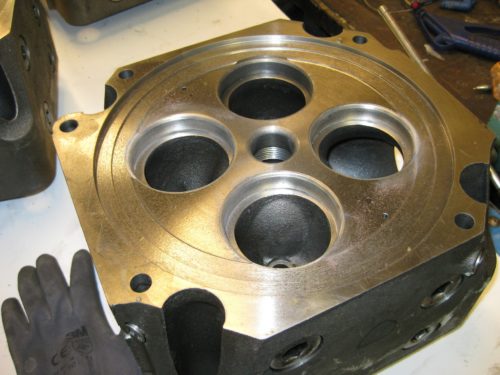Selective plating – a quick and sustainable fix for long-term mining challenges.
Now more than ever, the mining industry needs cost-effective solutions to meet the long-term challenges presented by harsh environments, rising costs and increased environmental pressures.
Mining’s off-road equipment and vehicles have to cope with extreme temperatures and harsh operating conditions including water and dust, as well as heavy duty cycles and vibration, all pushing machines to the limit. Component corrosion, damage and failure are inevitable, resulting in inefficiency and potentially the breakdown of mission critical equipment such as engines, drives and hydraulics.
With downtime and productivity at stake, the problems mount up for maintenance.
Selective plating v Tank plating
Electroplating is used extensively across all sectors but has special value in mining where harsh operating conditions are the norm.
The most common electroplating method is tank plating, where components are dipped into a bath of the required solution. The drawback is that components need to be removed from the equipment, shipped to the supplier, masked as appropriate and then be repackaged and shipped back, all of which adds cost and time. In contrast, selective plating is exactly that – it allows users to apply a solution to a specific area with the use of a hand-held tool, commonly known as the brush. Equipment is minimal and repairs can be undertaken minimal with masking on site, in a job shop, or even with the component in situ, thanks to a lightweight power pack and portable equipment.
Selective plating delivers ease, speed and convenience, literally at the stroke of a brush. Not only are plate deposits typically between 30 and 60 times faster than with tank plating, it all takes place at room temperature, eliminating any possibility of distortion or stress.
A typical case study.
 Selective plating is an approved process in mining and has been used extensively for a wide range of applications across the sector. Although there are a number of processes, they all use a variety of alloys – including copper, nickel, nickel-tungsten and cobalt – to repair components and restore them to original OEM dimensions and standards.
Selective plating is an approved process in mining and has been used extensively for a wide range of applications across the sector. Although there are a number of processes, they all use a variety of alloys – including copper, nickel, nickel-tungsten and cobalt – to repair components and restore them to original OEM dimensions and standards.
One typical case involved an internationally respected manufacturer of large surface mining equipment. They discovered that 35% of all cylinder head failures were due to fretting and required a cost-effective alternative to replacing them. After initial trials, two methods were chosen for closer investigation – welding and selective brush plating. Both were evaluated against criteria, such as cost, time, and the overall quality of the coating.
The results showed that while welding was a low-cost solution, the deposits were of insufficient quality for the application, and were also subject to potentially damaging heat distortion – an inevitable consequence of the process. In comparison, brush plating – using nickel to restore dimensions and add wear resistance – delivered a durable and high-quality deposit, free of the risk of heat distortion. It was also 16% faster to apply and only marginally more expensive.
For these reasons, the SIFCO Process® was adopted as its preferred method for salvaging cylinder heads, bringing key benefits including reduced use of materials, less waste and lower energy consumption. Compared with the costs of new or replacement parts, this resulted in annual savings of some $95,000.
Superior, sustainable, in situ…
The mining sector has always faced serious challenges in terms of component wear and tear, and in keeping operational costs to a minimum. Now, the sector is also under increasing scrutiny to reduce its carbon impact in both the short and long-term. By re-manufacturing original components to superior standards, quickly and effectively in situ, selective plating can help mining companies take another significant step towards more continuous, cost-efficient and sustainable operations.

 Chinese (Simplified)
Chinese (Simplified)  English (UK)
English (UK)  French
French  German
German  Spanish
Spanish  Swedish
Swedish 